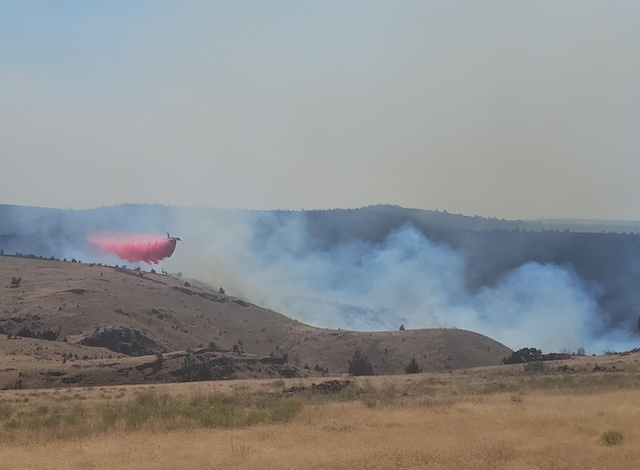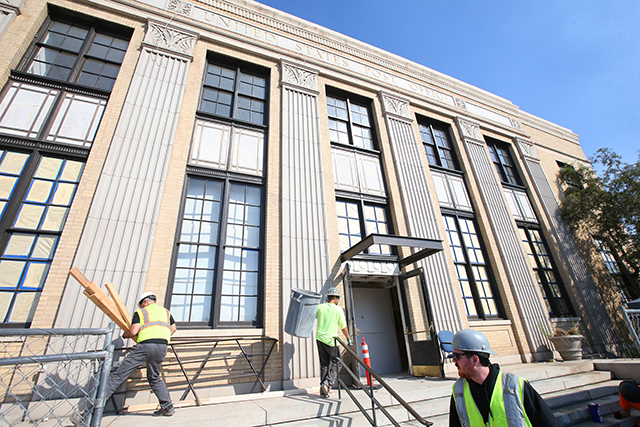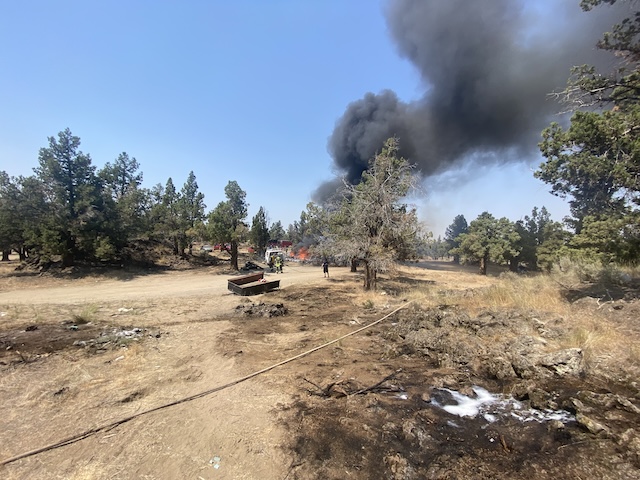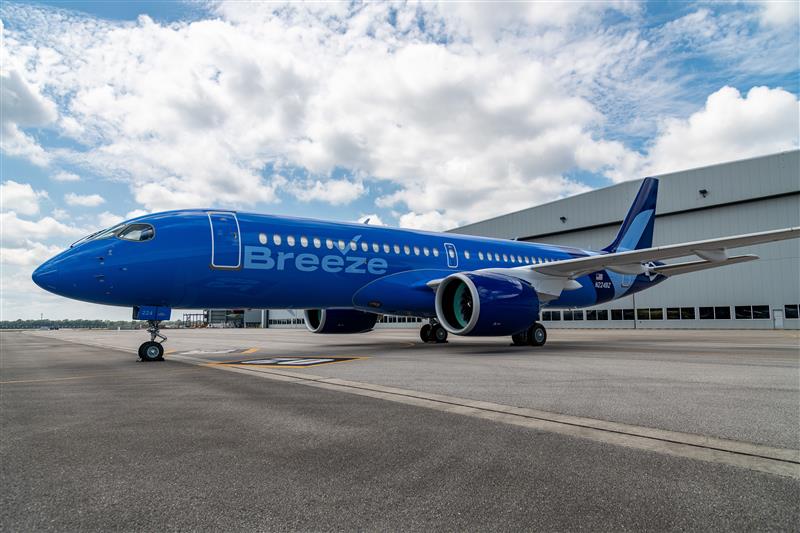Inside the wildland firefighters’ rappel training in Bend
Published 5:30 pm Thursday, April 18, 2024
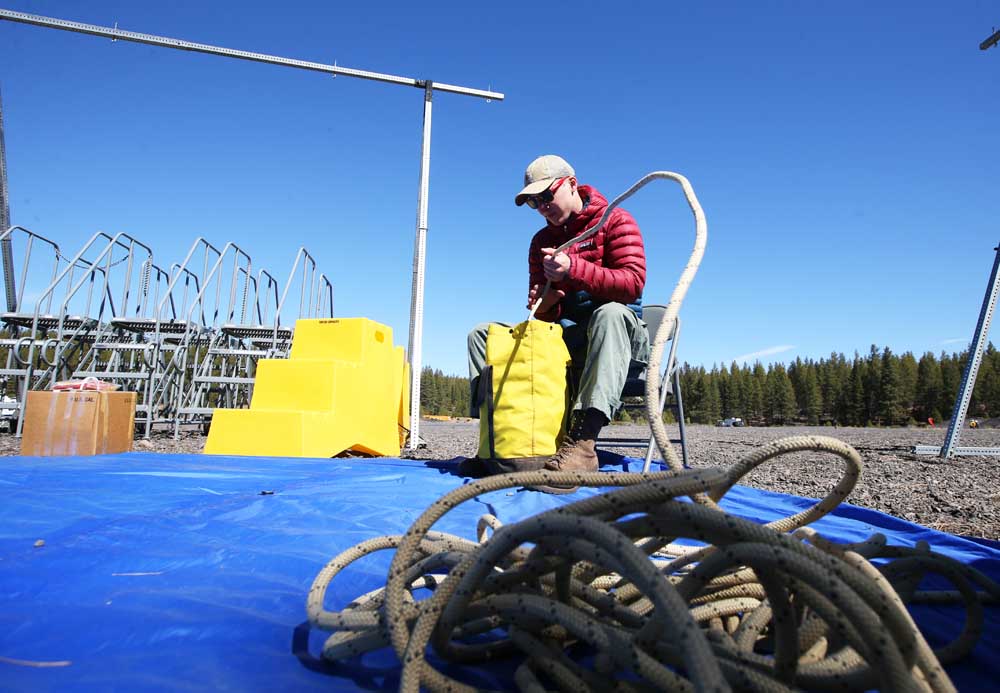
- Ryan Cole, a U.S. Forest Service rappeller from Bend, pulls and prepares his rope and checks his rope line for potential damage, which he does after each rappel. It's all part of the U.S. Forest Service's annual rappel recertification program at the Oregon Department of Transportation sand pit off Forest Road 41 on the edge of Bend on Thursday morning.
In a forested area west of Bend on Thursday, Sarah Jakober peered up at a blindingly blue Oregon sky as helicopters circled overhead. Soon she’d be inside one of them, only to jump out with nothing but a rope to catch her fall.
Jakober, 31, isn’t part of an X-Games competition nor has she joined an adventure tour. She’s in Bend for two days as part of a recertification program required by the U.S. Forest Service for wildland firefighters who rappel out of helicopters when attacking wildfires.
Trending
Rappellers and spotters work in difficult terrain in remote locations in variable weather. That combination of factors requires the Forest Service to recertify crews annually ahead of wildfire season to refresh their skills in a risky part of the job.
“Most of us are coming off of six months of winter, so this is part of the recalibration process. But after the first couple of reps, it comes back pretty easily,” said Jakober, a member of the Grand Ronde Rappel Crew based out of La Grande.
Rappel training will bring heavy helicopter activity to the Deschutes National Forest
As a veteran rappeller, the process of pushing away from the helicopter has become routine, but when she started this journey seven years ago there was a greater mix of emotions.
Trending
“It was pretty scary. I was hyperfocused on what I needed to do,” she said.
Training for descending through tree canopy
During the summer, firefighters like Jakober rappel into a wildfire area several times a month. Most of the time they rappel without incident, but sometimes it can require descending into tight spots in the tree canopy, she said.
It takes nerve to get off a helicopter seat and step out into open air, hundreds of feet above what is often a very small opening between the trees.
“When you are in the seat, you don’t know where you are going until you get the signal to move out onto the skid and that is where you get your first look at where you are going to end up,” said Jakober.
Rappellers’ role similar to smokejumpers
Jakober is one of 80 wildland firefighters getting certified this week on the Deschutes National Forest. Around 15 of the rappellers are based in Central Oregon. The spotter has to be certified for rappelling and spotting. Spotters help run the mission from the back of the helicopter.
Rappelling into wildfire zones isn’t something done by first-year wildland firefighters. Chad Schmidt, air base manager for Central Oregon Rappellers, said the opportunity to join a rappelling crew comes after a few years of wildfire experience. Wildland firefighters flown to a remote area usually serve as an initial attack group that works to extinguish fires when they are still small.
Their role is similar to that of smokejumpers, who perform a similar task but reach fires by parachuting to them by plane.
For rappellers, the training includes emergency procedures and rappel simulations conducted on the ground. Then each person rappels three times out of a helicopter flying approximately 250 feet to 300 feet above the ground.
Multiple checks are conducted, ensuring the rappeller is up to speed on tasks. The participants must show proficiency in getting into the aircraft, standard rappel procedures and emergency situations. Many of the tasks are done using hand signals.
It’s a ‘high-risk operation’
Rappelling from helicopters is a “high-risk operation” because multiple factors could create an emergency, said Schmidt. The act of flying helicopters into remote areas and going close to large wildfires creates variables for risk.
“When you break down the rappelling part of it, with our training and the equipment we use, we feel that part is fairly low risk inside the bigger equation,” said Schmidt.
Multiple helicopters are on site this week, flying above a clearing near Forest Road 41.
When Bulletin reporters visited the training location on Thursday the rappellers were gathered around tents where organizers were designating time slots for them to take their jumps. In groups of four, they walked toward designated helicopters to perform their rappels wearing protective equipment and holding gear. Each group was joined by one spotter.
The experience can be an adrenaline rush for rookies, said Schmidt but the event becomes “normal” when it’s done year after year.
“The rappelling. It is what it is,” he said.
Jakober one of few women training to drop into fires
While the act of descending from a rope tethered to a helicopter may be routine for some, what makes the event special is the reuniting of colleagues after the long winter break, said Jakober.
“It’s fun to come back to the workforce and know everybody and see everybody throughout the season and year to year,” she said. “It feels kinda like a small family.”
But if this is a family, it’s a lot of brothers. Jakober — who has bachelor’s degree in civil engineering from Boise State University and a master’s degree in atmospheric science from the University of Nevada, Reno — was one of the few women.
“There’s not very many,” she said, when asked about other female rappellers. “This year on our crew we have three out of 36.”
While their numbers are small, Jakober looks forward to meeting up with her female colleagues at these annual recertification events.
“Yeah,” she said. “It’s awesome.”


